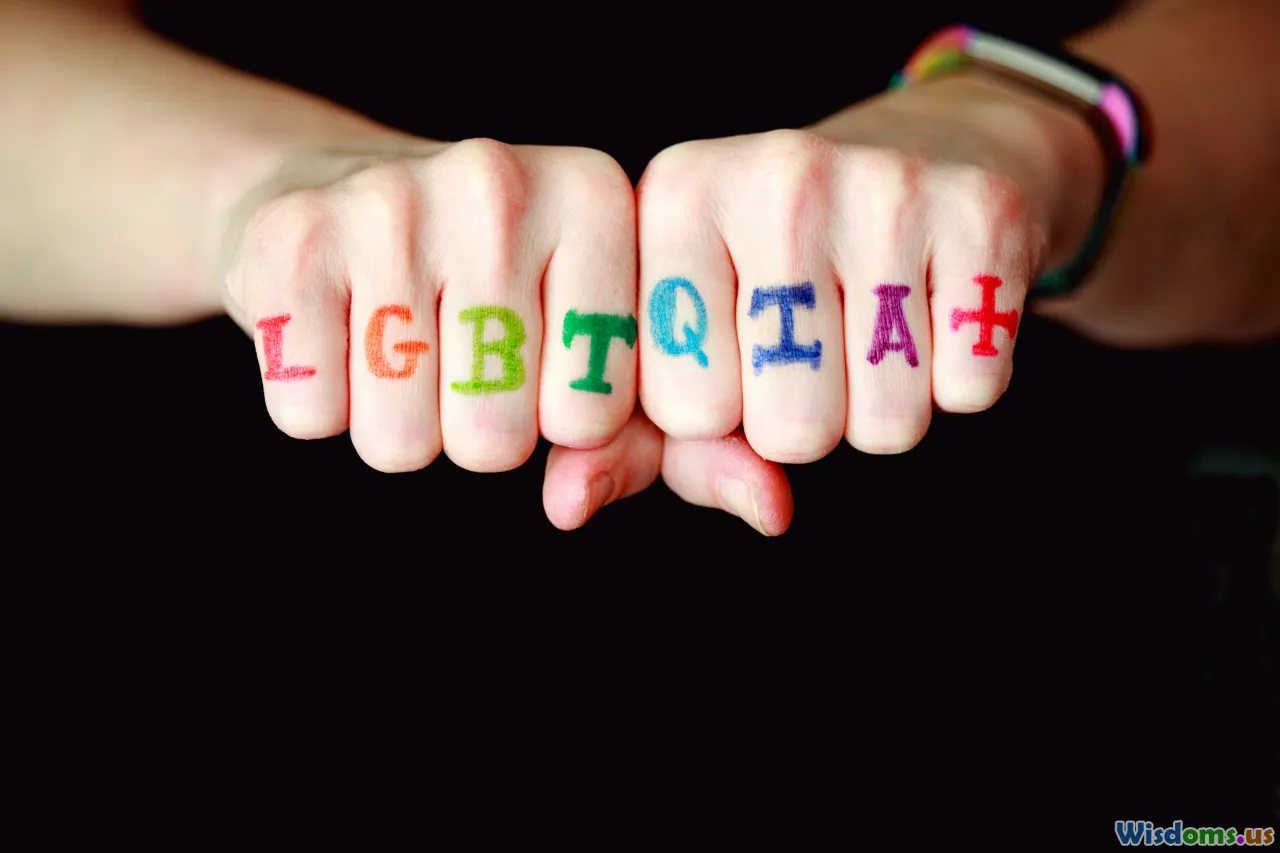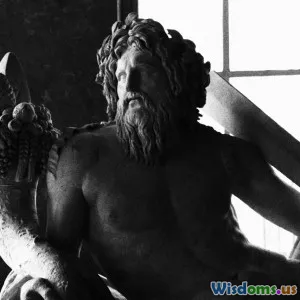
Surprising Gender Roles In Early Egyptian Thought
9 min read Uncover how early Egyptian thought challenged modern gender norms, revealing complex roles and divine imagery that shaped ancient society. (0 Reviews)
Surprising Gender Roles In Early Egyptian Thought
When one contemplates ancient Egypt, the first images that arise might be pyramids, pharaohs, or mystical temples. But delve deeper, and a far more complex web of societal and religious constructs emerges—especially when exploring gender roles. Contrary to popular beliefs that ancient societies inherently placed rigid patriarchy at their societal core, early Egyptian thought presents a nuanced and surprisingly flexible understanding of gender that challenges many modern assumptions.
Introduction: The Mystery Behind Ancient Gender Constructs
In the popular imagination, gender roles in ancient civilizations often default to male dominance, both politically and spiritually. However, early Egyptian civilization, which flourished for over three millennia, provides an intriguing case where gender roles fuse divine essence, social structure, and cultural dynamics in ways that blur such binaries.
Egyptian myths and societal frameworks present gender roles not as fixed hierarchies but as fluid spectra embodied by gods and goddesses, kings and queens, and common people. This article aims to unpack these surprising aspects by analyzing theological texts, archaeological evidence, and historical scholarship about gender roles in early Egyptian thought.
The Divine Gender Spectrum: Gods and Goddesses Beyond Binary
The Balance of Ma’at and the Fluidity of Deity
Central to Egyptian cosmology is the concept of Ma’at—cosmic balance, truth, and order. The gods embody this balance in surprising ways. For instance, the creator god Atum is said to have created himself as both male and female, embodying the totality of creation within a single being. This dual-gender portrayal emphasizes a holistic origin rather than strict masculinity.
Similarly, the goddess Hathor encapsulates motherhood, fertility, music, and joy, yet also shelters the pharaoh’s rule—showing power beyond a traditionally passive female role. The goddess Sekhmet brings even more complexity, as a fierce war deity displaying both protective and destructive qualities. Hence, divine gendered entities in Egypt straddle roles, symbolizing fluidity rather than stereotypes.
Examples from Mythology
One prominent myth involves the god Osiris and his sister-wife Isis, reinforcing an intertwined gender dynamic. Isis’s magico-religious roles as healer and protector equal Osiris's kingship and rule from the afterlife, signifying mutual dependence and complementary functions rather than dominance.
An especially fascinating myth is that of the god Thoth, who is trickster, inventor, and mediator, portrayed with gender-transcending attributes, sometimes taking female form in ritualistic contexts, representing knowledge beyond gender limitations.
Women in Early Egyptian Society: More than Just Queens and Mothers
Legal Rights and Property Ownership
Ancient Egyptian women held legal rights that were quite advanced for their time. They could own, inherit, and will property independently, a stark contrast to many contemporaneous societies where women’s legal identities were subsumed entirely under male guardianship.
For example, the surviving legal documents, such as marriage contracts and wills, showcase women navigating the legal system autonomously. Women were active economic agents and could conduct business in their own right.
Political Power: The Reign of Female Pharaohs
While male pharaohs dominated Egyptian history, female pharaohs like Hatshepsut dramatically upended gender expectations. Hatshepsut assumed full royal titulary and regalia, adopting traditional male iconography to validate her reign but wielding power that ancient society accepted.
Her building projects, trade expeditions, and religious reforms underscored that female rule was not merely symbolic but effective and respected.
Daily Life and Social Influence
Women also influenced religious and cultural activities as priestesses, midwives, and artisans. Priestesses of Hathor or Isis played vital roles in temple rites, blending religious authority with societal engagements.
Married women held social prominence in their households but were not confined there. Songs, tomb inscriptions, and letters depict women participating in festivals, owning property, and engaging actively in the arts.
Masculinity and Masculine Roles: Beyond Warrior Archetypes
Pharaoh as Divine Masculine
Though Egyptian kings often performed roles associated with war and governance, representation of kingship emphasized harmonizing masculine and feminine principles. Pharaohs were expected to personify Ma’at through wise, balanced rule, integrating traits such as justice (not just strength).
Kings were portrayed wearing both male and female regalia in some artistic depictions. Early studies crop up, for instance, in funerary art and statuary where pharaohs embody protective and life-giving roles traditionally attributed to feminine divinity—highlighting role fluidity.
Masculine Roles in Daily Society
Men were often responsible for labor, agriculture, and administration, but this did not mean power was monopolized without checks. The social contract within Egyptian communities underscored balance; male dominance was moderated by religious beliefs and respect for female roles.
The Influence of Gender Fluidity on Egyptian Culture and Legacy
The Egyptian model resisted rigid binaries and moved toward symbolic and practical complementarity of genders, influencing laws, traditions, and religious practices.
Gender in Religious Rituals
Sometimes temple priests adopted cross-gender roles during rituals to emulate gods’ fluid gender expressions. Such purposeful transgressions emphasized spiritual ideals over bodily binaries, a practice rarely seen in other ancient systems.
Lessons for Contemporary Gender Studies
Egypt’s early gender roles reveal an ancient society that recognized complexity in human identity and power. By understanding this nuanced model, modern discussions on gender fluidity might find an indigenous precedent that transcends Western gender constructs.
Conclusion: Rethinking Ancient Gender Perspectives
Early Egyptian thought disrupts the simplistic notion that ancient societies were monolithically patriarchal. Instead, their divine myths, social laws, and cultural practices showcase an integration of gender roles marked by fluidity, mutual respect, and functional complementarity.
Women enjoyed legal rights, political power, and religious authority, while masculinity was defined more by maintaining cosmic balance than by dominance alone. The gods themselves synthesized masculine and feminine attributes, blending gender traits to symbolize universal totality.
As we continue to explore ancient civilizations’ views on gender, Egyptian thought stands out not as a relic of rigid patriarchy but as an inspiring testimony to the richness of human identity throughout history.
By studying these ancient perspectives, readers today can gain fresh insights into how societies can embrace gender diversity and fluidity in modern frameworks.
References
- Tyldesley, Joyce. Daughters of Isis: Women of Ancient Egypt. Penguin Books, 1995.
- Allen, James P. The Ancient Egyptian Language: An Historical Study. Cambridge University Press, 2013.
- Assmann, Jan. The Mind of Egypt: History and Meaning in the Time of the Pharaohs. Harvard University Press, 2002.
- Shaw, Ian. The Oxford History of Ancient Egypt. Oxford University Press, 2000.
Explore further:
- The role of women in other ancient Mediterranean societies
- Cross-cultural analysis of mythological gender fluidity
- Modern implications of ancient gender constructs in policies and education
With ancient Egypt's multifaceted understanding of gender, contemporary readers have a rich and surprising model that challenges binary thinking and expands the conversation about identity and power today.
Rate the Post
User Reviews
Popular Posts


















